
 Feedhose -- a firehose for feeds
Feedhose -- a firehose for feeds  A strange confluence of events. I was writing a series about rebooting RSS. Then I had a bike accident that left me dazed and in pain. One evening I woke up and found I could sit for a few hours in front of the computer without pain. That was pretty cool, because even lying in bed was excruciating. My poor body was in need of some rest. Programming could provide it.
A strange confluence of events. I was writing a series about rebooting RSS. Then I had a bike accident that left me dazed and in pain. One evening I woke up and found I could sit for a few hours in front of the computer without pain. That was pretty cool, because even lying in bed was excruciating. My poor body was in need of some rest. Programming could provide it.
So there I was in front of the machine. Now what? I could write some code. But what?
I had been playing with long-polling for instant outlining, with excellent results. I wonder if the same could be done for feeds. I had found an OPML file on the NY Times site with all their feeds, so I hooked it up to River2. Now I had a relatively realtime flow of every story from the Times. So I wrote a minimal server that would wait until something new showed up and then return it. (Later I wrote a filter that eliminated duplicate titles, so even if a story appeared in two feeds it would only be shot out through the hose once.)
A small embellishment, let the caller give me a "seed" that indicated where he left off. If any new items came in while he was processing the last ones I returned, he wouldn't miss any. Every packet includes a seed which you can send back to me.
Then I wrote a client. Then I added another stream, and broadened my client so it could handle multiple streams.
The result is a nice sweet little protocol that behaves like two familiar things:
1. A long-poll server.
2. RSS.
It's pretty cool. Let me know if you're writing some scripts to test it out. The format is described below.
Here's an example of a query:
http://hose.scripting.com/?name=nytimes&timeout=3.
Click the link. It'll just sit there till it times out after 3 seconds or, if a new item comes in before the timeout, it will return with that item.
Here's an example of a response with some items. There are two forks to the XML, items and metadata.
items are just a series of RSS items (or Atom entries, for feeds that are in Atom format). However we add three elements to each item, feedUrl, feedTitle and feedLink. My app, on the other end of the hose, needed this info. Seemed reasonable to provide it since I had it there.
In metadata, there are two elements, now -- might add others in the future. seed is the one you need to include as a parameter in your next call. If the seed returned is xxx, then your next call would be http://hose.scripting.com/?name=nytimes&seed=xxx.
The seed is supposed to be opaque, that is -- you shouldn't expect to understand its structure, but you can see mine is pretty straightforward. It's a walk of the hierarchy in my object database. Year-month-day-serialnum. So 2010-09-30-00651 is talking about the 651st news item on Sept 30 (today).
One more thing, I wrote a handler that returns the current seed in case you want to start off with a seed. You don't have to, but your code might be a little simpler if you have it to start out with. http://hose.scripting.com/seed
Update: I've released the source code for the Frontier tool that implements both sides of the protocol.
 Angelgate takes on a whole new meaning
Angelgate takes on a whole new meaning A couple of possibly final thoughts about Angelgate and as a bonus some thoughts about the value of money.
1. I started my first Silicon Valley company in the early 80s with angel money. Then, and now, it was a collegial thing. A bunch of guys (they're almost all men) play at entrepreneurship the way other men play ponies. They're not going to live the life of the 20-something. They couldn't, it's too much stress, and they have lives, and more important they have cash. It's hard to push that hard when you aren't betting it all. The young guy (he's almost always a guy, too) is like a racehorse. The angels all get to hang around the stables, and watch the game closeup. The price? As little as $10K or as much as $500K, depending how much of a thrill you like.
When I was coming up, they had their meetings at the Stagecoach Restaurant on Woodside Road. It's long-gone now. It was a dark, smoky greasepit of place. While I was raising money I'd have breakfast there every morning and if one of the angels showed up I'd pitch him. I'd call my chief angel from the office later and he'd go over and see how I did. Invariably he'd come back with a check. We raised a couple of million this way.
 I don't think there was any collusion back then. The angels sure talked to each other, all the time, but you know what, that's allowed. There's no law against talking. My angels did try a couple of rebellious things, but it was mostly because they didn't understand how software worked. Software was a relatively new business then, and retail software, which is what we made, was completely new. I chalk it up to confusion, which was my fault -- I was their leader. In any case it all had a happy ending. We sold the company in a big stock deal and went public and got rich.
I don't think there was any collusion back then. The angels sure talked to each other, all the time, but you know what, that's allowed. There's no law against talking. My angels did try a couple of rebellious things, but it was mostly because they didn't understand how software worked. Software was a relatively new business then, and retail software, which is what we made, was completely new. I chalk it up to confusion, which was my fault -- I was their leader. In any case it all had a happy ending. We sold the company in a big stock deal and went public and got rich.
2. What we didn't know while Angelgate was playing out, that Mike did know -- is that he was getting close to completing the sale of his company to AOL. Note that I didn't say he knew he was selling to AOL, because until the deal is signed you never know. But in that light, it could take on greater significance. It could be Mike declaring his independence from the financial community of Silicon Valley. It's easy to see that before AOL owned it, TechCrunch would be subject to some amount of pushing around by the financial people. If he was on the outs with any of them, he would lose an important flow of information, that would possibly go to one of his competitors. Mike's ace were his sources in the VC and angel communities, and in the upper echelons of management at the big tech companies and startups.
But now that his publication is in league with Engadget, they're going to get their stories no matter what, it seems. And despite what everyone says about Mike staying on, the longevity of founders in acquisitions usually is limited. And Mike is a typical founder (that's neither good or bad, it just is). I stayed at the company that acquired mine for six months. And a lot of that time was spent at home, plotting my next moves. If you're the kind of guy who starts things, the endless corporate activities of the company that acquired you seem terribly off-topic, almost to the point of irrelevance. Give me something to chew on! I kept thinking. I'm sure Mike will too.
3. It occurs to me that this may be the first big pile of money that Mike has gotten. If so, it must be a wonderful feeling. I remember when that happened for me. I sold a bit of my stock to the VCs who (for all practical purposes) owned the company that bought mine. It was, in the end a small part of the money I received, but none of it mattered as much as that very first check. It was for $425,000. I had to sit down. My legs were weak. Literally. It was at that moment that I realized that my days of being poor were over. That my struggle was over. I had attained a huge safety net. There was a level below which I wouldn't fall. Until that point, I had no such feeling.
After that were years of confusion, until I learned something very important.
Money is a good thing to have, up to a point. But it can only buy you one thing that's worth more than all the rest -- your time. After that, the returns diminish rapidly. Sure it's nice to drive a luxurious car, and live close to where it's all happening. Those are also good things. But if the choice is to give up yourself to have those things, there would be no choice.
There were other things I learned from not wanting for money. Live a simpler life. Every time you have a choice to complicate things, choose the other way. I've made the more-complicated choice many times. In hindsight, the good decisions were ones that kept things simple.
One final thought -- money does not buy you security. It can't. We are not secure. If you get rich and wonder why you don't feel secure, that's why. If you're poor thinking the rich folk feel secure, they don't. For more on that, I wrote a piece 10 years ago called Transcendental Money.
 Connecting the LEV with the East Village
Connecting the LEV with the East Village LEV stands for The Local East Village.
It's a news site run by the NY Times and NYU.
I am an adivser to this project in my capacity as a Visiting Scholar at NYU.
One of the first things I did was put together an aggregator of all the East Village news sources I could find, to try to quickly get an idea of what was already there. This has proved useful to the team, so they've added it to the navigation bar at the top of every page on the site.
I think it will really start being effective when:
1. We really start to feel the pulse of the community through the aggregator.
2. When the bloggers of the East Village start to get traffic from both LEV and the aggregator.
The second is more important, because flow is the currency of the web, it's the ultimate respect. Pointers are nice, but traffic is even nicer. ![]()
But to get to #2 you have to first, imho, get to #1. Along with their course credit and a grade, our students should also come away with a feel for the community they covered, and probably more important if they're going to have a career in journalism, what it means to have the feel for a community.
Right now it's still the early days. ![]()
PS: I used the River2 aggregator, which I wrote myself. It's pretty easy to set up and it's free. I recommend it to any news organization that wants to keep in touch with the community it's serving.
PPS: This is how NYU is viewed by some in the East Village.
 Congrats to TechCrunch and Mike
Congrats to TechCrunch and Mike  I was there when TechCrunch launched.
I was there when TechCrunch launched.
Mike and Keith were starting a company. Mike was doing competitive research. I said he should start a blog and share what he was learning. Then people would read his posts and add what they know, and send Mike off in different directions. A lot of people would have looked at me like I was Mother Teresa or a rastafarian, but Mike understood, immediately.
When he posted an interesting analysis on TechCrunch, I linked to it from scripting.com. I told everyone to subscribe to his feed. He got a prominent location in my blogroll, and then after his site had accumulated a lot of reviews, the outline of them got its own spot in my site directory. I made it my business to see that everyone knew what great work my friend Mike was doing.
The stuff they were covering turned out to be nothing less than another layer of technology and a whole raft of Silicon Valley startups, the smallest part was the company all this analysis was originally for, and eventually Keith and Mike gave up and TechCrunch got its independence.
I'm proud of the very small role I played in getting it going. I'd say that I gave the Crunch of Tech its first Kick in the pants. Not that it needed much of a kick because Mike Arrington is that rarest of birds -- a Natural Born Blogger (NBB).
Hey so Mike you're a rich dude now. You're paying next time we share a meal. ![]()
And congrats to all the others, Heather and the team. Hard work and never giving up, pays off. Mazel tov.
 How to use open formats
How to use open formats 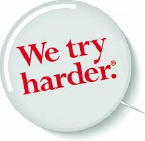 A couple of months ago an exec from a big tech company asked me to write about how to create standards, or how to work openly or collaboratively. There are lots of names for what we do, lots of ways to describe it. So I wrote a piece, and promised to write more.
A couple of months ago an exec from a big tech company asked me to write about how to create standards, or how to work openly or collaboratively. There are lots of names for what we do, lots of ways to describe it. So I wrote a piece, and promised to write more.
Then on Friday I reblogged a comment I read on Stack Overflow because I thought it was a wise summary of what could be learned from the Atom community's attempt to overthrow RSS.
You had to tilt your head at a very odd angle to miss the raging torrent that RSS had become. Only if you missed that would you think that it could be replaced. Atom criticized RSS for being too fragmented, too fought-over, only to further fragment it, and fight over it even more.
In the comments of that post I added three things that I've wanted to say for a long time. I even wanted to put some of them in the RSS 2.0 spec, but decided against it, because it wouldn't be understood (I felt) by most people who read specs.
Here are the three things:
1. If it hurts when you do it, stop doing it.
2. Shut up and eat your vegetables.
3. Assume people have common sense.
One of the few criticisms the Atom folk hurled at RSS was that there was no way to know if a title had markup.
Most feed developers, if they ever tried to put markup in a title and failed to have it understood by an aggregator, seem to have applied rule #1.
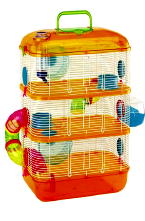 That's one of the big rules of technology. Yes, it would be better if specs warned you off, or made it illegal so a validator could warn you about it (hey a validator could even if it's not in the spec). But like software, no spec is perfect. No spec writer anticipates everything. So you have to use common sense when interpreting the trail of clues left behind.
That's one of the big rules of technology. Yes, it would be better if specs warned you off, or made it illegal so a validator could warn you about it (hey a validator could even if it's not in the spec). But like software, no spec is perfect. No spec writer anticipates everything. So you have to use common sense when interpreting the trail of clues left behind.
Number 2 says you have to choose between being a person who hangs out on mail lists talking foul about people and their work, or plowing ahead and making software anyway even though you're dealing with imperfection. If you're serious about software, at some point you just do what you have to do. You accept that the format won't do everything anyone could ever want it to do. Realize that's how they were able to ship it, by deciding they had done enough and not pushing it any further.
And item #3 says at some point just give up trying to please the lawyers and list inhabitants, and work for the people who are willing to avoid the things that hurt and people who mostly do things that are good for themselves.
So this is another howto -- it's how to be a user of common formats and protocols and be productive with them and get past those who focus on the negatives.
 The ultimate reporter tech toolkit?
The ultimate reporter tech toolkit? Interesting blog post about the journalist's toolkit for this day and age.
Except that's way too much to carry, esp if you have to move around a lot, or if it's hot.
I learned a lot about this covering two Democratic National Conventions in 2004 and 2008.
I think I had it pretty well optimized by the second one.
What I brought to Denver:
1. A 17-inch MacBook Pro, but that stayed in the condo. Too big to carry.
2. I carried a tiny Asus Eee PC. It was even smaller than the one I have now. Another blogger had one too and we were both wearing jackets in 90-plus degree heat so we could put the Asus in the jacket pocket. It was that small. Today's netbook is too large for that. Since it only had 16GB of solid state memory, I brought an external hard disk with me. Today I wouldn't need to because the Asus has a huge internal hard drive. The Asus was the centerpiece of my tech toolkit. It was this experience that convinced me that netbooks not only worked, but were an essential form factor.
3. I had a Sprint USB modem, it worked pretty well most of the time. Today I would carry a Verizon Mifi card. But they provided Ethernet connectivity in all the working press rooms. Example.
4. I had a Canon SureShot, tiny little camera, but I wouldn't bring that today. Instead I'd carry the iPhone 4 as my camera. It has its own communication ability, and it can communicate via wifi. The Canon takes slightly better pictures, but the ability to communicate is the deciding factor. I want my pictures to be up on the net fast, and I don't want to spend a lot of time doing it. With the Canon I have to fuss around with the SD card, and while I'm doing that, I can't take pictures. Often working in very tight spaces, and have drinks in my hand and talking on the phone or texting while I'm working.
Here are the pics I took in Denver.
5. I had a small microphone that connected to the computer, but again, I wouldn't need that now because the iPhone 4 has a built-in voice recorder for the occasional podcast. Or I'd use Cinch from Blogtalkradio.
6. I brought a reporter's notebook with me as well. It helps to have the ability to write some notes quickly. Sometimes it's just too much to get the computer out and find a surface to type on. You have to sit down for that. Writing with pen and paper can be done standing up. The right tool for the right moment.
What else?
I thought the readers of Scripting News might have some ideas how to optimize the traveling reporter's geek toolkit. It's great that they're thinking about this now, here's a chance to do some real collaborating.
 Ping: It's better than it (last) appeared
Ping: It's better than it (last) appeared Recall that we didn't like the earlier version of Ping in iTunes 10.0.
A quick note about iTunes 10.1.
Ping now is beginning to actually be a social network for music.
I just played a song from my collection and told everyone I liked it.
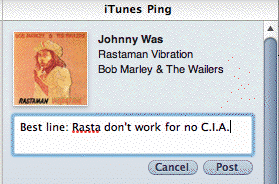
I'm scriptingnews on Ping.
Follow me! ![]()
Update: No can ping The Beatles. Not in iTunes store.
PS: Still wish it ran in my browser.
 Today's ride: BANG!
Today's ride: BANG!  Riding along at a good clip, must have had a tail wind. Just north of 54th, a ramp comes off the West Side Highway and into the cruise ship terminal. Crossing the Hudson River Greenway bike path. The cars have a stop sign. The bikes don't stop.
Riding along at a good clip, must have had a tail wind. Just north of 54th, a ramp comes off the West Side Highway and into the cruise ship terminal. Crossing the Hudson River Greenway bike path. The cars have a stop sign. The bikes don't stop.
Usually there's a cop there making the cars stop, to protect the bikers, but there was no one there today. As I round the corner, a car is speeding up, going through the stop sign, driver looking me in the eye. I hit the brakes. Go over the handlebar, and fall in a pile of Dave. Stunned. Nothing broken. Scraped badly, bleeding. The bike's front tire ruined.
There's much more to the story but I don't have the patience to re-live the drama right now. Never mind. I'm hurting tonight. And tomorrow I'll be black and blue. No riding for a while.
This is war.
Dave
PS: I was riding too fast for the spot I was in.
 Why use RSS?
Why use RSS? I've been following the RSS section on Stack Overflow for the last few months. It's been really interesting to see the kinds of questions developers have, and it's also been gratifying to see that they usually get good advice from the developers assembled there. It's a better environment than the contentious discussions that used to happen on the syndication mail lists.
An answer to a fairly common question, written by Derek Park, would have been what I would have said if people were listening, back when Atom launched. I'll just quote it here and say that I mostly concur.
 "The fundamental thing that the Atom creators didn't understand (and that the Atom supporters still don't understand), is that Atom isn't somehow separate from RSS. There's this idea that RSS fractured, and that somehow Atom fixes that problem. But it doesn't. Atom is just another RSS splinter. A new name doesn't change the fact that it's just one more standard competing to do the same job, a job for which any of the competing standards are sufficient.
"The fundamental thing that the Atom creators didn't understand (and that the Atom supporters still don't understand), is that Atom isn't somehow separate from RSS. There's this idea that RSS fractured, and that somehow Atom fixes that problem. But it doesn't. Atom is just another RSS splinter. A new name doesn't change the fact that it's just one more standard competing to do the same job, a job for which any of the competing standards are sufficient.
"No one outside a fairly small group of people care at all which standard is used. They just want it to work. Atom, RSS 2.0, RSS 1.0, RSS 401(k), whatever. As long as it works, the users are happy. The RSS 'brand' very much defines the entire feed category, though, so on the rare occasion that someone does know enough to choose, they will tend to choose RSS, because it's got 'the name.' They will also tend to choose RSS 2.0, because it's got the bigger number.
"RSS, and especially RSS 2.0, are very much entrenched in the feed 'industry.' Atom hasn't taken off because it doesn't bring much except a new name. Why switch away from RSS when it works just fine? And why even bother using Atom on new projects if RSS is sufficient? Switching to a new feed format mostly means extra time spent learning the new format."
Before anyone suggests that I'm looking for a debate, I am not. River2 supports Atom, as does all my other RSS-processing software. Atom is here to stay. But it didn't solve any problems, it just added another feed format that developers have to support.
 Angelgate in a Nutshell
Angelgate in a Nutshell I was talking about Angelgate earlier today with an entepeneur (the new spelling) and we were talking about what a difference it makes that we don't know who was there when Mike Arrington walked in on the meetup of angels apparently colluding in an illegal fashion.
To see the difference, let's do some numbers.
Suppose there are 150 active angel investors in Silicon Valley.
Suppose there were 20 angels in the room on the day in question.
That means 130 angels weren't there.
Suppose you are one of the angels who wasn't. What do you do?
Tough choice. You could write a letter to all your friends and hope they leak it to TechCrunch as Ron Conway clearly did, and hope that TechCrunch runs it.
Or you could call up all your contacts and say you weren't there. But then they would wonder. I wonder why he felt the need to do that? They'll probably think I was there if I deny it. Better to say nothing.
Now imagine that there are 1000 entrepreneurs in Silicon Valley out looking for money. Suppose you're one of them. You've had meetings with a bunch of angels and you're wondering if the guys you've been meeting with were in the collusion meeting that Mike reported on? No way to know, since TechCrunch didn't say who was there.
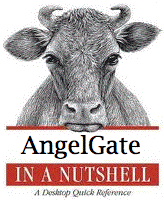 So the net-effect of the story is to tarnish the reps of 150 angels, including 130 angels who did nothing wrong.
So the net-effect of the story is to tarnish the reps of 150 angels, including 130 angels who did nothing wrong.
And to introduce doubt in the minds of the 1000 entrepreneurs.
If you're one of the 130, you're probably begging Mike to publish the list right now.
And if you're an entrepreneur you're probably begging Mike to let you know who they were, so you know not to do business with them.
No matter what, guess who's at the center of all investment conversations in Silicon Valley right now?
Heh. Pretty neat.
 Google New is great, but..
Google New is great, but.. Google New is the "one place to find everything new from Google."
Great freaking idea and thanks. Except for one thing.
Where's the feed?
Hello.
Hellp.
 My first piece on "net neutrality"
My first piece on "net neutrality" As far as I know I've never written about net neutrality on scripting.com.
So this is the first time.
I've never written about it because I didn't know what to say.
I really don't understand the issue. But then today I received a press release in email saying that a lot of music stars, along with moveon.org, are making a stand in favor of net neutrality. How are they doing it? By posting messages on Twitter and Facebook.
Wait a minute!
That's fucked up.
Here they are taking a stand against corporate ownership of public media, and they use corporate media to express this point of view. No that's not how you do it. Wrong. Hypocritical. Clueless.
You have to be consistent in your story. If you don't want corporate ownership of media on one level, you can't support it on another.
Neither Facebook or Twitter allow peering. To get on their network you have to be in their network. It's fine to use these tools, I suppose -- I do -- but if you want to take a political stand in favor of an open and free Internet, do it on the open and free Interet. Please.
Create a blog, put it on your server, hook it up to the net through one of the companies you're protesting against (that's what's worth protesting, your limited choice), and speak your mind. Then, if you must, tweet links to those stories and share them on Facebook.
Please.
 Farewell to the phone
Farewell to the phone I was re-reading a piece I wrote yesterday and focused for a minute on the picture of the telephone.

I realized that there are now people in this world who, if you showed them that picture, would not be able to explain how it worked or maybe even what it was. Given a few more years, maybe as little as ten, and the majority of people will not know.
Then I think of relatives who are no longer with us who would have no context with which to understand my iPhone or Droid.
There were phone "booths" in public places like airports and subways.
There was something very simple and even elegant about the virtuality presented by the world wide phone network. IDs were strings of ten numbers which people memorized. In other ways it was actually quite complicated. Several people would map to a single number. There were all kinds of social conventions that went with it, like: "I'll get it!" or "She's not here now" or "Can I take a message?"
This was expecially visible when I re-watched a favorite movie, Minority Report. Directed by Steven Spielberg, based on a Philip K Dick story, starring Tom Cruise, Colin Farrell and Max von Sydow. It's set in 2054. The user interface of the computer Cruise uses is now reflected in the touch interface of the iPad. Whether they got the ideas from the movie or not, I don't know.
At one point, near the end of the movie, the phone rings. It's a tiny little thing on the banquet table. A secretary picks it up, answers, and tells her boss it's an urgent call on his private line.
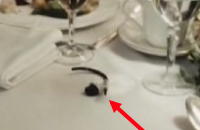
Hey they got the form factor right (at least partially, it looks like a Bluetooth headset) but the social conventions they describe are long-gone. And it's only 2010.
Sometimes when people say things change very fast, they're right. Some people still call the hand-held devices phones. But they're not phones. Phones are fading fast. Soon they won't exist.
 One of the last summer-like rides?
One of the last summer-like rides? It was in the upper 80s today, glorious weather for a ride. Perfectly sunny. The trail was mostly empty. Guess everyone was at work! ![]()
One thing I learned today is if it feels like there's no wind riding north that means there's actually a pretty good tailwind. You feel it on the way south.
Regardless, it was a great ride. Tomorrow will likely be just as good, but then Saturday or Sunday the weather turns autumn-like and it's time for long sleeves.
Here's one of the first HDR pictures that's really worth it. The Hudson River at 100th St in the afternoon heat. Click through for the full effect.
The map. 69 minutes, 11.43 miles.
 Rebooting RSS, interlude
Rebooting RSS, interlude  A couple of small items between major posts in the continuing thread about Rebooting RSS.
A couple of small items between major posts in the continuing thread about Rebooting RSS.
1. Ryan Tate, in a comment here, says he doesn't see the efficiency in my proposal to shorten names.
2. Jon Udell on the idea of rebooting RSS, among other topics.
A general observation. I would love to have dinner sometime with Jon and Ryan, and let them try to poke holes in my plan to reboot RSS.
Along the way I might repeat a few times the why of it.
The why of it: I want to create, out of RSS, something like Twitter, but not locked up on one company's servers. Call me an opensorcerer or a rastafarian, but I like networks that aren't controlled by one company. Esp not a tech company.
To Ryan's concern. He says he can subscribe to scripting.com now (although I'm not aware of any place you can do that). I want him to be able to follow davewiner, the same way he would on Twitter. But have it resolve to the URL of an RSS feed, invisibly.
That last part -- invisibly -- is super-important.
To get there, I need a way to map names to URLs.
Bill Seitz asks which of my many feeds would map to davewiner?
Good question. You should come to the dinner too Bill! ![]()
But you don't have to wait to get the answer.
It would be the same feed I currently send through Twitter.
 As I said in an earlier piece, not in the Rebooting RSS thread: choice and ease of use are inversely related. The more you limit choice, the easier you can make it. I have to pay a price to be part of a simpified network. I already pay that price by being part of Twitter's network. Now I want to renegotiate that. I'm still willing to make a choice, and only have some of my stuff flow through the canonical davewiner feed. But I know that any element in that feed can point to content that would usually be in another feed. I give up some flexibility to be part of a network that's easier to use.
As I said in an earlier piece, not in the Rebooting RSS thread: choice and ease of use are inversely related. The more you limit choice, the easier you can make it. I have to pay a price to be part of a simpified network. I already pay that price by being part of Twitter's network. Now I want to renegotiate that. I'm still willing to make a choice, and only have some of my stuff flow through the canonical davewiner feed. But I know that any element in that feed can point to content that would usually be in another feed. I give up some flexibility to be part of a network that's easier to use.
 What kind of news system...?
What kind of news system...?  Twitter Corp seems to have figured out that it's at least a dress rehearsal for the news system of the future. That's good because that's what the potential is.
Twitter Corp seems to have figured out that it's at least a dress rehearsal for the news system of the future. That's good because that's what the potential is.
But what kind of news system says "Sorry we did something wrong. Try sending your tweet again in a minute" when you try to post a piece of news to it?
News is about what's new. Not what was new a minute ago. You can quote me on that (not that it's a great revelation).
Twitter once was cute, but that's in the past. Pushing around its partners doesn't make you warm and cuddly, and more and more they're pushing around users. And it's not okay that they're making a bid for exclusivity on the role of News System of the Future, and they can't even keep their servers running properly. Either you deliver the benefit of being the sole provider, or sorry (to paraphrase their error message) get the fuck out of the way.
For what it's worth, the bit of news I want to pass along is a story told by a Wallmart exec about how and why people buy baby formula at midnight. It's a parable for our times, not a happy one.
 Today's ride: Real HDR pictures
Today's ride: Real HDR pictures I thought I had been taking HDR pictures with my iPhone 4, but until today I had the setting turned off. The pictures I took on today's ride actually were. Tell me if you see a difference. (Click below to see the full-resolution pictures on Flickr.)
Here's what HDR does with something that's moving.
The map. 11.7 miles, 65 minutes.
 Rebooting RSS, short names for feeds
Rebooting RSS, short names for feeds  This is the fifth piece in the Reboot RSS series which started one week ago today. The other pieces are: Architecture of RSS, Two ways to read RSS, Pulling it together.
This is the fifth piece in the Reboot RSS series which started one week ago today. The other pieces are: Architecture of RSS, Two ways to read RSS, Pulling it together.
So far the two new elements of the architecture are: 1. One-click to subscribe. 2. A central server run by a foundation that provides OPML subscription lists for each user to feed engines.
Now the third element -- short names for feeds.
On Twitter I am known as davewiner. Same on Facebook. On Apple's network I am scriptingnews, on Google's dave.winer.
On the RSS network I have a strange name:
This puts the RSS network at a distinct disadvantage, don't you think! ![]()
I would much rather have a name than a URL, even though the URL is a good thing, because it's how the network gets its loose-coupled-ness. It tells anyone who cares how to find the new stuff from me. It's stood the test of time, it works, it scales reasonably well, and it allows choice. The only thing wrong with it is that it's ugly!
Luckily we can make it pretty, as I outlined in a previous pieces. We will use the naming architecture of the Internet itself, called DNS or the Domain Name System. Here's how it would work.
1. If you don't already have a domain, and most of us don't, you can go to a registrar like GoDaddy or Gandi and buy one. But most people won't do that because you will also be able to go to providers who will sell you a sub-domain much more cheaply if not give it to you for free. It'b been argued that it's too hard to get a domain or a sub-domain, but it doesn't have to be that way. There's no reason it should be any more difficult than getting a username on Twitter or Facebook. All you're doing is associating a string of characters with an email address. There's nothing hard about that, not in 2010.
2. When you register the name, if you already have an RSS feed you want to be associated with that name, as I do -- you'll just enter it into a text area on the registrar website and click Submit. Then the URL will be stored as the TXT attribute of the name and served up to anyone who wants it over the DNS protocol.
 For example, my name would be davewiner.com (I already own that domain), and the associated URL would be http://scripting.com/rss.xml.
For example, my name would be davewiner.com (I already own that domain), and the associated URL would be http://scripting.com/rss.xml.
3. When someone decides they want to follow me, instead of entering the URL, they will be able to enter davewiner.com. That's all.
Now you could imagine a special TLD, something like .rss, that would be understood when you enter a name. I could register dave.winer.rss for a nominal charge, and if you want to subscribe to me, you could enter dave.winer. The .rss part would be assumed, just as .com is assumed in a lot of contexts on the web.
See how this is working? Everything in this space seems to involve URL-shortening. This is no exception. And this is as far as we want to go, because now the name is as short and as easy to sign up for as the centralized networks, without the centralization penalty.
Voila!
 How a Facebook "phone" can be easier than iPhone
How a Facebook "phone" can be easier than iPhone Following up on today's previous piece.
There's an assumption built into every Internet debate that anything that comes from Apple must be easier than anything that comes from anyone else. It's not true, of course. Ease-of-use isn't always a mystical or magical thing, sometimes it's mathematical.
Ease-of-use is inversely proportional to the number of choices.
Fewer choices ==> easier to use.
No, not always (anticipating that someone would say that). If you're really stupid at design, you can have fewer choices and still not be eaiser to use. Your classic lose-lose.
Take email for example. The iPhone email app has to allow all kinds of options that a Facebook device wouldn't have to, because I can use an iPhone with any email server I want to. And any number of them. This is great for people who understand how email works, but a lot of people don't.
 It gets even more complex if you want to synch contacts. So complicated that Google had to put up a page explaining, in 13 steps, how to do it if you want to use their contact system on an iPhone.
It gets even more complex if you want to synch contacts. So complicated that Google had to put up a page explaining, in 13 steps, how to do it if you want to use their contact system on an iPhone.
I'm not saying choice is bad, it's not! I wouldn't use a phone that didn't offer lots of choices. But there are plenty of people who can't do the setup. They just can't wrap their minds around how these things work. (And if you think they're all old, think again. It's amazing to me how little at least some of today's college students know about how computers work. Yes, I took the time to actually find out.)
Ideally, to configure a Facebook phone, you would enter your username and password. All the other configuration data would be pre-determined.
PS: I put "phone" in quotes because that's how people are referring to these devices. It's anachronistic. Looking back from the future we'll wonder why people thought of these devices as phones. They are very little like their non-mobile counterparts.
PPS: I'm not saying this is good or bad, it just is.
 Facebook's phone as obvious as nose on your face
Facebook's phone as obvious as nose on your face  Honestly, I thought everyone knew that Facebook was working on a hand-held device.
Honestly, I thought everyone knew that Facebook was working on a hand-held device.
Flip it around. What if someone told you they weren't working on one? They'd be nuts.
Just look at what Facebook is.
1. Pictures.
2. Contacts.
3. Chat.
4. Email.
5. Check-ins.
6. Networked.
About the only thing it isn't is voice, and that's really not a big deal on today's "phones."
 They have a shot at creating the mobile device my mother would love. And my mother has an iPhone, and it's really hard to use when you look at it through her eyes. Seriously.
They have a shot at creating the mobile device my mother would love. And my mother has an iPhone, and it's really hard to use when you look at it through her eyes. Seriously.
If you took the Facebook app for the iPhone and pulled it out through its umbilical cord and made it the operating environment instead of just an app, you'd have an awesomely simple mobile device. Just add an icon for Voice and you're good to go.
PS: It'll probably suck a lot less than Apple's social network. ![]()
PPS: Another way to think of it. For a major Internet utility like Facebook, doing a mobile device is like a major word processor doing printer drivers in the 80s, back when the OS didn't do them.
PPPS: There ought to be a strictly freeware non-corporate platform for mobile devices. Possible an Android distribution.
 east-village.org
east-village.org To get a feel for what blogging is like in the East Village, I started an aggregator at:
The site is run by River2 running in the OPML Editor.
Background...
When I started at NYU, there was another project booting up -- a blog run by the NY Times and NYU jointly to cover the East Village.
It hadn't been announced back then, so I couldn't talk about it here on Scripting News. The site has since rolled out.
 But there wasn't much interest, so in May I turned it off. Sites like this fall into disrepair quickly. You have to watch for feeds that wander off topic, and there are always problems to take care of and one less site makes life a little easier. In this case, the aggregator was the last service running on an AWS instance, so by turning it off I was able to shut it off too.
But there wasn't much interest, so in May I turned it off. Sites like this fall into disrepair quickly. You have to watch for feeds that wander off topic, and there are always problems to take care of and one less site makes life a little easier. In this case, the aggregator was the last service running on an AWS instance, so by turning it off I was able to shut it off too.
Yesterday I got an email from Brooke Kroeger, the director of the journalism institute at NYU, wondering why the site hadn't updated since May. I offered to turn it back on, and she asked me to. So it's back on.
If you have any comments or questions, please let me know. It's a resource for anyone and everyone. There's an OPML of all the feeds it follows. You're free to run that through your aggregator if you like.
 Saturday after Labor Day bike ride
Saturday after Labor Day bike ride Well, it's a Saturday that means the paths are jammed with Sunday riders and people walking four-across.
Seriously these people don't get the meaning of "get the fuck out of my way." It's a crime how they be, I tell you.
But no collisions today. Whew. ![]()
Wore long pants over my bike shorts. Getting a wee bit chilly out there.
At the turnaround point (roughly 96th St) I took a picture with my iPhone 4, upgraded to the 4.1 version of the OS, which is capable of taking pictures that theoretically will blow you away, according to Uncle Steve. You can judge for yourself. (Click on the small versions to get to the full-size ones.)
They look pretty good, but I don't see the difference with these and the old version of the OS. Whatever.
Anyway, here's the map. 1 hour, 10.12 miles.
Had to stop to get my tires filled, accounting for the longish clock time. The good people at Bike and Roll at 43rd were very kind (and competent).
 Rebooting RSS, pulling it together
Rebooting RSS, pulling it together 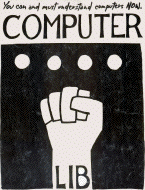 In the discussion under the last two Rebooting RSS pieces there were two key points, both of which, together, give a clear sense of where this is going.
In the discussion under the last two Rebooting RSS pieces there were two key points, both of which, together, give a clear sense of where this is going.
Pito Salas says that the reason Twitter is so easy is that they have subscription down to a single click. Yes indeed. That's something RSS can't do, although in a perfect world it would. It's that ideal that I start the design with.
Winter Seale says that if subscription is to get easy, that feed engines must not just import OPML, they must be able to subscribe to it.
+1
With subscriptions and reading decoupled, we just need to settle on the central place to manage subscriptions. That's the place all the content sites would have to point to, to make subscribing as easy as it is in Twitter. With N possible places to subscribe you get icon hell.
In the first piece in the series, I said it needs to be a foundation that runs this service. Each user has an account, and it serves up OPML to anyone you want it to. There must be lots of competition in all other areas of RSS, but this is the one place where you need to reduce choice, to centralize, to make it simple.
For people like you and me who don't mind a little complexity we can host our subscription lists elsewhere.
BTW, when thinking about this, don't think about RSS as it used to be. Think about it as the way we de-couple Twitter from the servers of a single vendor. When they do things you don't like, think about this reboot. Even if you don't use RSS and OPML, it's going to look like this, if it's not locked up in a single vendor's cloud.
Another point -- even if it's a foundation that runs the central subscription service, it pays to think about 1. Companies that have the technical expertise in building such services, and 2. Content platforms whose support will help bootstrap this service in the field.
In category 1, the one I'm most familiar with is XMarks (formerly FoxMarks when their service only worked with Firefox). They do a fantastic job of centralizing bookmarks. I'm sure there are others. Ultimately the service is going to operate very much like XMarks.
In category 2, the vendors who can provide the initial push to get this working are the blogging tool vendors, WordPress, SixApart, Tumblr, Posterous, etc. And the publications whose content wants to be independent of the companies of Silicon Valley. I know today most of the management at these companies don't see Apple, Twitter, Facebook and Google as a threat. But over time I am positive they will. It'll be good, as that becomes more apparent, to have a network to provide independent support to sources of content and new ways to read it.
 I think the picture is becoming pretty clear, for anyone who is schooled in the technology, and willing to put an hour or so into reading and thinking about it. If you're not convinced, and you like technical puzzles, try to come up with an alternative, and see if it doesn't involve the basic elements outlined here. Centralized subscriptions. A foundation guaranteeing neutrality, with support from the content vendors. If you really think you have one, it's worth a blog post, don't waste the idea on a comment. And shooting from the hip with little or no thought isn't going to get you to the answer.
I think the picture is becoming pretty clear, for anyone who is schooled in the technology, and willing to put an hour or so into reading and thinking about it. If you're not convinced, and you like technical puzzles, try to come up with an alternative, and see if it doesn't involve the basic elements outlined here. Centralized subscriptions. A foundation guaranteeing neutrality, with support from the content vendors. If you really think you have one, it's worth a blog post, don't waste the idea on a comment. And shooting from the hip with little or no thought isn't going to get you to the answer.
And, as always, if you like the way things work now -- the good news is you may get to continue doing it. There are no guarantees as the tech companies who own the all-in-one services have full power to change how they work. This is what gets people riled up about Facebook, and what will get them going about Twitter (reading tea-leaves, first they shook up the developers, next they will have to shake up the users too).
If you study the history of technology, you'll see that it would be unprecedented if the unbundling didn't take place. It always seems to work like this. In the early stages of a technology layer, the industry provides training wheels, all-in-one packages that limit flexibility in favor of simplicity. But eventually two things happen: 1. The companies find they have to make changes to scale the business model, and 2. More and more users get comfortable with the technology and no longer need the training wheels. When these reach critical mass, that's when new layers like personal computers and the World Wide Web are fully realized. Ultimately computers are, imho, about liberating people and ideas. To build layers though we have to accept limits. Its this iterative process that's led us to where we are now.
 OTOH, Flash can reallllly suck
OTOH, Flash can reallllly suck  Just so people know that when I say Apple is going to lose the battle with Flash (and I still think they will) that sometimes Flash is the worst thing in the world.
Just so people know that when I say Apple is going to lose the battle with Flash (and I still think they will) that sometimes Flash is the worst thing in the world.
For example the Izod site. It's a Flash nightmare. I go there because I want to buy some shirts. Not have an "experience." Amazon doesn't have the sizes I'm looking for, they used to, but now they don't. So I figure I'll go to the source.
Well if they have what I'm looking for you can't prove it by me. I spent a minute trying to find my way through Men's clothes and gave up. I mean what's so hard about helping a paying customer find what they're looking for? You know, the people who actually buy things that keep you in business?
 Yes, Virginia, there are two ways to read RSS
Yes, Virginia, there are two ways to read RSS  When I preach the benefits of River of News, I always get flack about how it's not the only way to read news. I know that. Of course.
When I preach the benefits of River of News, I always get flack about how it's not the only way to read news. I know that. Of course.
Let's spell it out.
The kind of flow almost everyone agrees is suited to River of News are feeds from news orgs like Reuters, the BBC and Guardian, AP, the Washington Post. They're constantly publishing links to stories, many of them different views of the same events. And they repeat. Join all those feeds and that forms the river.
And then there are my friends, Doc Searls, NakedJen, Fred Wilson. People whose every post I want to at least see, if not read. My mother has a blog. When I talk to her on the phone she always asks if I've read her latest posts. I never want to have to say: "No Mom, I must have missed it in my River of News." And then there's Paul Krugman and Simon Johnson, two people I've never met but have enormous respect for. I want to read everything they write.
However, what they have in common is that they update infrequently, and it may be they should just be in a "slow river," together, instead of a mailbox-like approach to feeds as implemented by Google Reader and NetNewsWire. In fact, that's how I make sure I see all the updates for these feeds, by flowing them through a special Twitter account called FriendsOfDave. Until the OAuthcalypse it was implemented as an adjunct to River2, my desktop aggregator. Then I switched to using TwitterFeed, and it works great.
So you may want two or more rivers, that update at different rates.
BTW, this is part of a continuing series on rebooting RSS. There will be more, if there's interest. And when you comment, please try to stay on-topic. If you have something to add to this post, information or a new perspective that's non-obvious, please post a comment. Thanks.
 Today's ride: Fall is coming
Today's ride: Fall is coming The projected high today was 79, but on the ride it felt more like 59.
Pretty strong headwind made the trip north a slow-go, but I flew back home.
As usual, the speed was more of a feeling than reality, as the map shows. 46.5 minutes, 8.34 miles.
A video I took at the turnaround point at 79th St.
 My fifth time through The Wire
My fifth time through The Wire  The Wire is still the best TV show ever.
The Wire is still the best TV show ever.
I like it so much I've watched all five seasons five times now.
And while I remember every scene, and practically every bit of dialog, it had been long enough since my last complete viewing that I forgot how everything turns out. Who is the police commissioner at the end of the last episode, for example? I didn't remember. What was the ultimate fate of Avon Barksdale? Same deal.
But there are some characters whose exits you never forget. Like Snoop, Cheese, D'Angelo Barksdale, Stringer Bell and Omar. To name a few. ![]()
There are so many cool moments, maybe the best one of all was when the scientists at Quantico give the profile of the serial killer and it fits McNulty to a T.
I hadn't watched The Wire since its creator David Simon went on a campaign to educate the rest of us on why we need to bend over to save the newspapers. How incongruous that is, when he portrayed the news orgs exactly as fubar as the unions, police, City Hall, schools. The recurring theme of The Wire is a few people want to do good work thwarted by those who just want to get by or get ahead. You know it's the same way in tech. They would have you believe that it's all about excellence, but it's not. The little bits of great work happen the same way they happen in Lester's police department. By sneaking something in the back door while the bosses' attention is elsewhere.
With that in mind, I feel more confident that getting the big institutions out of the way so that the Small Picture can rule is the way to go. I'd love to have a beer with Simon some day and go over this with him.
At least we (probably) agree on one thing, The Wire is great theater.
The most touching moment: Kima sitting in the window with Elijah, saying goodnight to the neighborhood. Close second, Beadie forgiving McNulty for being so McNulty. Slim Charles paying off Cheese.
This time I downloaded sub-titles from the net. This helped a lot, because a lot of the dialog was meaningless to me the first four times I watched. I don't speak the dialect of English they do. But after so much listening to The Wire, I have all their voices and all the things they say running through my head 24 by 7. You feel me?
Cool Lester Smooth! ![]()
For some reason Marlo Stanfield makes me think of Matt Mullenweg. Go figure.
Trivia: There's at least one actor who played roles in The Wire and Breaking Bad. Do you know who it is?? ![]()
One more thing -- maybe the best thing about The Wire is all the different characters you can try on. There are some who I don't feel at all like. Cedric Daniels and his wife, for example. Brother Mouzone. But there's a little bit of McNulty in me, and Stringer, and when I fantasize -- I'm Marlo Stanfield or Omar or young Michael. But maybe the most heroic characters on the show are Kima and Bunk and Prezbo. Or Bunny or Bubs. Bodie. Prop Joe.
How about that -- which Wire character is most like you? Which one do you admire the most? Which one gets on your nerves? There's a lot of food for thought here.
Update: They're teaching The Wire at Harvard this year. ![]()
 Why the netbook category is fading
Why the netbook category is fading  I don't know about everyone else, but if they came out with some new features, or reduced the size, or even made one that looked sexier, I'd buy another netbook. Fact is, they haven't done any of that. I already have a netbook that works.
I don't know about everyone else, but if they came out with some new features, or reduced the size, or even made one that looked sexier, I'd buy another netbook. Fact is, they haven't done any of that. I already have a netbook that works.
I understand that the manufacturers have their hands tied by restrictive licensing by Microsoft and Intel. They can only ship Windows on machines with 160GB hard drives, with 1GB of memory. There's probably also a limit on CPU performance.
Too bad, because a nice tablet computer would be an Asus Eee PC with a bigger screen and no keyboard and Windows XP. Or if they had a powerful enough CPU to drive the kind of display that's in an iPhone 4. Or even the previous iPhone.
The netbook was a winner, but it's fading out quickly due to lack of anything new or fun.
 Business, legal, and technical challenges
Business, legal, and technical challenges 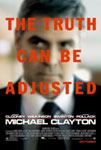 This is a follow-up to the 16 Media Partners piece from Tuesday.
This is a follow-up to the 16 Media Partners piece from Tuesday.
Doug Williams, in a comment on the previous piece in this thread, said: "As was communicated at the event, we are taking open requests for partnerships at contentpartnerships@twitter.com. Even if you aren't content or application owner, I'd enjoy hearing what you would like to see enabled in the detail pane. For a number of business, legal, and technical challenges, providing open access to the detail pane does not make sense at this time."
How Twitter has lost its way. They used to have a wide-open content platform, you could flow through anything you wanted on a completely level playing field. Now, they're talking "content partnerships."
If there were legal or technical challenges, how could search engines provide access to graphic content? There's even an open format for embedding these objects. The really good-for-everyone approach would have been to just support that, and test with your partners, and then we can all scramble to make sure it works with what we do.
I don't even see the business reason for not processing anyone's content, unless they're charging their 16 media partners, which seems backwards. After all, twitpic, yfrog, et al are storing the images, and effectively having their ads scraped.
As for what was said and wasn't said at the event, I wasn't there -- and the video feed was only what Scoble could scrape together. Someday we'll be adults here, and really explain what's going on, not blow smoke in each others faces.
 The Architecture of RSS
The Architecture of RSS A few days ago I wrote a piece about how to reboot RSS. A lot of people read the piece, and asked me to expand on the ideas from a technological point of view, which I'm glad to do.
To begin, let's review the architecture of RSS.
Here are the basic concepts.
 1. Feeds. They come from lots of places. Blogs have feeds. News organizations have them. Sources for news organizations have them. Even Twitter provides its content in the form of feeds. I have a feed from my stock broker, and from Netflix, recommending new releases I might want to watch. Amazon offers me deals. I subscribe to a feed from the NOAA that tells me about the hurricanes, as the news becomes available. This is the same feed that the Times and Reuters and AP watch. I get news from a huge number of tech blogs. From English-language news sources in Europe and Asia. I get radio programs, links to new software downloads. I even follow a few Twitter users whose updates I don't want to miss. I subscribe to feeds about the place I live now, and places I used to live. And of course feeds from friends I want to keep up with. All of this and much more comes to me through feeds.
1. Feeds. They come from lots of places. Blogs have feeds. News organizations have them. Sources for news organizations have them. Even Twitter provides its content in the form of feeds. I have a feed from my stock broker, and from Netflix, recommending new releases I might want to watch. Amazon offers me deals. I subscribe to a feed from the NOAA that tells me about the hurricanes, as the news becomes available. This is the same feed that the Times and Reuters and AP watch. I get news from a huge number of tech blogs. From English-language news sources in Europe and Asia. I get radio programs, links to new software downloads. I even follow a few Twitter users whose updates I don't want to miss. I subscribe to feeds about the place I live now, and places I used to live. And of course feeds from friends I want to keep up with. All of this and much more comes to me through feeds.
2. Feed items. Each item in a feed has several bits of data: A title, link, description, publication date, identifier. Not all are always present. And there is other data that is less common but also appears: An enclosure, categories, a pointer to the source of the item (if it was republished).
3. Feed engine. It reads a collection of feeds periodically, and from that collection produces a stream of new content. There are lots of them. There's one embedded in every feed reader. I've written several.
4. Subscriptions. Each user has a collection of subscriptions, which can be edited. You can subscribe to a feed, which is most commonly done when you're viewing a website and decide to add it to your collection. You can decide you no longer wish to see items from a feed, or unsubscribe. This usually happens when you're reading feeds.
5. User interface. There are lots of ways to read feeds. There's the hierarchic approach favored by Google Reader and NetNewsWire (examples). There's the River of News approach that I like. You can have feed content emailed to you, or SMS'd, or read it in Twitter or Facebook or Friendfeed. There are many other user interfaces for feed reading.
Feeds and engines, and the tools that generate feeds, are independent of each other, and this is a good thing. You have your choice in every category. But there is one place where having choice makes RSS weaker and harder to use, and that's in the act of subscribing to a feed.
 Here's the scenario. I'm reading a news article and realize this is the seventh time in the last two days that I've been at this site, and I really like the way they cover the news. A thought forms in my head: "I want to subscribe." This is where the user experience can get confusing. It's different for everyone. If the site provided a link to subscribe in your favorite reader, it's easy. But if they didn't, and if you haven't installed a bookmarklet, you're in for some copying and pasting, navigating and waiting. And you'll lose your place. Most of the time you decide not to bother. And the use of reader-specific links reduces the number of choices, and this is where the stagnation in the RSS market came from. This, the act of subscribing, is the act that we have to make more fluid, easier, more satisfying, faster.
Here's the scenario. I'm reading a news article and realize this is the seventh time in the last two days that I've been at this site, and I really like the way they cover the news. A thought forms in my head: "I want to subscribe." This is where the user experience can get confusing. It's different for everyone. If the site provided a link to subscribe in your favorite reader, it's easy. But if they didn't, and if you haven't installed a bookmarklet, you're in for some copying and pasting, navigating and waiting. And you'll lose your place. Most of the time you decide not to bother. And the use of reader-specific links reduces the number of choices, and this is where the stagnation in the RSS market came from. This, the act of subscribing, is the act that we have to make more fluid, easier, more satisfying, faster.
It's important to say that I am not proposing any changes in the architecture of RSS. I am however, proposing that some new software be built, with the aim of making RSS easier to use, more reliable, and to create a more diverse marketplace with lots of opportunity.
And that's where I'm going to stop for today. There are more pieces coming, if there's an interest. ![]()
 Does Twitter understand Twitter?
Does Twitter understand Twitter?  At the end of last night's press conference, Scoble was doing an interview with a Twitter guy, I think his name is Jason Goldman. He said he was Vice-President of Product. Scoble observed that the changes they announced yesterday were cosmetic, that the underlying structure hadn't changed. The Twitter guy agreed.
At the end of last night's press conference, Scoble was doing an interview with a Twitter guy, I think his name is Jason Goldman. He said he was Vice-President of Product. Scoble observed that the changes they announced yesterday were cosmetic, that the underlying structure hadn't changed. The Twitter guy agreed.
Then Scoble asked about a serious flaw in the structure, one that a lot of us have observed, and it's hard to see why it hasn't been fixed. I've written it up both in tweets and a blog post. Now Scoble got to actually ask a Twitter guy the question.
Here's the problem.
Someone addresses a message to you, like this:
@bullmancuso, you should stick to writing about mob violence. You don't know anything about sports or the Mets. So STFU already.
Okay, now assume three things:
1. Bull Mancuso doesn't get a lot of responses, so that message is going to linger in his Replies tab for a long time, maybe weeks.
2. Bull, even though he's a mob enforcer, is a sensitive guy, and this tweet hurts his feelings.
3. But he's also interested in what people say about his tweets, so he's always checking the Replies tab.
So here's the question for the Twitter guys.
Q: Why does Bull have to keep looking at that offensive message?
A: He doesn't. He could block the asshole.
Which leads to the next question.
Q: Wouldn't it be simpler to give Bull a command that just blocks that one message (you could call it Hide or Delete).
A: ????
I'd love to hear a Twitter guy explain that one. Because blocking is a very serious thing to do, and probably is overkill.
 No more Twitter apps
No more Twitter apps  Every so often I get asked to look at a Twitter app. I usually look, and usually am depressed by what I see.
Every so often I get asked to look at a Twitter app. I usually look, and usually am depressed by what I see.
They're all scams. If they're any good they'd be better without the connection to Twitter. At least they'd be more honest.
I don't like calling software or platforms dead, but if I did, I'd say that about the Twitter API.
In any case, I don't expect to see any compelling Twitter apps from here-out.
 16 media partners
16 media partners Last night at 7PM Eastern those of who care about the evolution of Twitter were glued to the TV set the same way millions watched Mercury rocket launches when I was a kid. The image was scratchy and the sound imperfect, but we hung on every word.
In the 60s we wanted to know if John Glenn would make it to outer space. Yesterday we wanted to know what Twitter had to announce that it thought was so big.
Someday these announcements will go without a glitch, the video will be at least watchable, but this time we had to settle for a camera between Scoble's legs. Which led to some fun moments where Scoble bent his head down and whispered to the gathered masses that he was going to ask our questions. But he didn't ask the one I wanted to ask. Here goes...
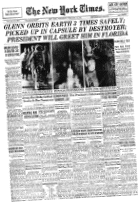 Ev, what's so special about Dailybooth, DeviantArt, Etsy, Flickr, Justin.TV, Kickstarter, Kiva, Photozou, Plixi, Twitgoo, TwitPic, Twitvid, USTREAM, Vimeo, Yfrog, and YouTube?
Ev, what's so special about Dailybooth, DeviantArt, Etsy, Flickr, Justin.TV, Kickstarter, Kiva, Photozou, Plixi, Twitgoo, TwitPic, Twitvid, USTREAM, Vimeo, Yfrog, and YouTube?
Let's put it another way.
For the first few years of Twitter encouraged guys like me to write little hack jobs to make it do things they didn't have time to make it do. So I did. What's the point if you don't continue to support that work. I didn't see my name in the list of 16 media partners. You say you didn't know. That's the point... You can't know all the good stuff that's happening so don't make it all flow through you.
The idea of "working with X media partners" instead of having an open interface so everything "just works" -- this is the big fork in the road. It was inevitable that they'd do their own client. They more or less telegraphed that. But why can't they just stick to the API-based approach and a level playing field, and let the best man win? Why do they have to tilt the table toward big companies and the companies that their board members invest in?
The net-net -- my photo app will look like crap compared to those of the media partners. I'm sure Twitter will work with their URL-shorteners, but they won't work with mine. Time to look for greener pastures.
 Tuesday ride
Tuesday ride Hey it's been a few days since my last ride. This one was short. Real windy out there, but sunny and warm.
Lots fewer riders on the pike now that the summer holiday season is over. Everyone's back in school and at work?
Anyway, gotta build up my head-of-steam again!
Here's the map. 49 minutes, 8.63 miles.
 How to reboot RSS
How to reboot RSS  I was not able to influence the VCs who started the RSS companies -- famous companies like Newsgator and Feedburner, and not-so-famous ones. Like most VCs they thought they understood better, so they went their own way and most of their companies flopped. Feedburner made a little money for its investors by centralizing RSS and selling that to Google. Why Google wanted it is a mystery. If they wanted to strangle and kill RSS, it would have proven a very good asset, but Google hasn't shown an interest in doing that. Maybe they just had a lot of money and it looked interesting. Who knows.
I was not able to influence the VCs who started the RSS companies -- famous companies like Newsgator and Feedburner, and not-so-famous ones. Like most VCs they thought they understood better, so they went their own way and most of their companies flopped. Feedburner made a little money for its investors by centralizing RSS and selling that to Google. Why Google wanted it is a mystery. If they wanted to strangle and kill RSS, it would have proven a very good asset, but Google hasn't shown an interest in doing that. Maybe they just had a lot of money and it looked interesting. Who knows.
The people in the tech press never listened either -- at the beginning it was CNET, and these days its TechCrunch. I keep saying the same thing over and over, the Google Reader approach is wrong, it isn't giving you what's new -- and that's all that matters in news.
Succinctly put -- news is about what's new -- and that's it.
 Anyway, RSS is doing fine. It forms the pipes through which news flows. Nowadays there are some new-fangled faucets called Twitter and Facebook. But behind the scenes, connecting it all together is RSS. Formats that are as deeply entrenched as RSS is stay deeply entrenched. It's how technology works. It's why we still use QWERTY typewriters and why pages are still 8.5 inches wide and 11 inches tall.
Anyway, RSS is doing fine. It forms the pipes through which news flows. Nowadays there are some new-fangled faucets called Twitter and Facebook. But behind the scenes, connecting it all together is RSS. Formats that are as deeply entrenched as RSS is stay deeply entrenched. It's how technology works. It's why we still use QWERTY typewriters and why pages are still 8.5 inches wide and 11 inches tall.
Why does Twitter work better for news than Google Reader? SImple, Twitter gives you what's new now. You don't have to hunt around to find the newest stuff. And it doesn't waste your time by telling you how many unread items you have. Who cares. (It's like asking how many NYT articles you haven't read. It would be gargantuan. I don't bother you with the number of Scripting News posts you haven't read, so why does Google?)
Maybe now that everyone agrees that Google Reader is behind us, we can start thinking about how to make news really work, learning from what we like about Twitter and Facebook. That's what I hope.
And here's what I think we should do.
First, we need a really lean and mean feed reading web service. It senses how frequently each feed changes and reads it that frequently. It's also possible for it to receive pings that say "read this feed now" -- very simple protocols, nothing as complicated as the stuff being proposed these days.
Let's call this server RiverCentral. It should be open source and very easy to install. But one of the big tech companies, one without too many fingers in too many pies, would run one. I like Yahoo or Amazon for this. It operates as a web service and a user interface. Simple REST API.
 What it doesn't do -- handle subscriptions. That's always been the weak spot in RSS. It should be centralized too, but that should be run non-commercially, by a foundation. Something like the name service that's at the core of the Internet. That's the one bit of the RSS puzzle that must be centralized and must not be in the hands of commercial vendors. Because then none of the commercial vendors will mind delegating their subscription-handling to it. With the RSS "market" virtually dead now (not to be confused with RSS itself) who could possibly have a problem with this?
What it doesn't do -- handle subscriptions. That's always been the weak spot in RSS. It should be centralized too, but that should be run non-commercially, by a foundation. Something like the name service that's at the core of the Internet. That's the one bit of the RSS puzzle that must be centralized and must not be in the hands of commercial vendors. Because then none of the commercial vendors will mind delegating their subscription-handling to it. With the RSS "market" virtually dead now (not to be confused with RSS itself) who could possibly have a problem with this?
Now we can make news really simple, and work the way we want. We've also got a platform-with-no-platform-vendor. Let everyone play, large and small. We need lots of highly optimized feed reading hubs, and one place to handle the subs.
Now this may not happen, and I'd argue if it doesn't RSS won't reboot, as a market. But it will happen in another sense. Either Twitter or Facebook will evolve to be the ideal news system, or a new upstart will come along to do it. The opportunity is there and the field is wide open.
 Facebook is developing a great places database
Facebook is developing a great places database For some reason I don't understand I've been willing to share my location, at least sometimes, on Facebook. I haven't been willing to do so on Foursquare. I'm trying to understand the difference.
Maybe it's like listening to a song on the radio, vs playing it for yourself. Or watching a recorded sporting event vs watching it live, even when you don't know the outcome. It's a shared thing. There are so many more people on Facebook, but more important, I have a feel for who they are. Foursquare is much more of an unknown to me.
 By building up a database of places, we're creating a resource for all of us. But, that's not really what we're doing. We're creating intellectual property for Facebook's shareholders.
By building up a database of places, we're creating a resource for all of us. But, that's not really what we're doing. We're creating intellectual property for Facebook's shareholders.
And that sucks. I've been snookered into being part of a crowd-sourcing business model. I'd much rather be part of a Wikipedia-like business model for places.
Maybe it's not too late to get into competition with Facebook on this, after all, they just started their places database in the last few weeks.
Where is Twitter's places database? Will they not get into this area because Foursquare is already there, and Union Square/Spark are already invested in Foursquare? I wouldn't wait if I were them. Maybe the two companies should merge.
The lead Facebook is building now will seem very large very soon, it seems to me.
But the rest of us, we're not co-owners in either of these portfolios.
Can we, should we be focusing our efforts on building a database outside these tech companies? (I don't know if we can but I do know that we should at least try.)
I'm sure there are open source projects to do this. The key thing is to have a user interface as easy as Facebook's. Or even better, a commitment from Facebook to share and freely license the places database they are building. That would be a great way to nail this thing down, now.
 What people don't understand about OAuth
What people don't understand about OAuth Here's a key point a lot of people don't get about OAuth.
 When you grant an application access with OAuth, you are giving them the same power you would with your username and password.
When you grant an application access with OAuth, you are giving them the same power you would with your username and password.
The main difference is that instead of a password that was chosen by you, a secret key generated by Twitter gives them access to your account. They can still add or remove followers, send DMs on your behalf, or post tweets, or replies. When you give an app permission with OAuth they get to be you on Twitter, exactly as if you had given them your password.
True, each app gets a different secret key, so you can de-authorize one app without de-authorizing all. That's the advantage that OAuth gives users. Sure, it has some value. But it's a convenience, it doesn't add security.
There have been a lot of vague promises made that have led people to believe they are safer but that is not true.
See also: Jon Udell on a cost of OAuth.
 Trying out TonidoPlug
Trying out TonidoPlug The kind folks at Tonido sent me a plug to play with, and I am doing so.
Here's what I've done so far:
1. Unboxed.
2. Connected it to power.
3. Connected it to my router.
Now I'm waiting for the blue LED to turn green, per the instruction sheet that comes with the product.
The problem is this: There are two LEDs on the unit, and one is yellow and the other is red.
I went to the website, but it's white text on a black background, and even worse the links are blue. The whole page reverberates. Really hard on the eyes.
The instructions on the sheet look good, but I can't do anything until I can access the plug on my LAN.
After navigating through the website a bit, I found the documentation. It's black on white, thankfully. But so far there's no clue what a yellow light means (the second one has now turned red).
However, even though the lights are the wrong color, I was able to connect to the plug through their website. Go figure! ![]()
I got through and was able to configure it. Still not sure what it is.
I think first and foremost these devices should just show up as shared disks on my desktop. From there, the web interface might be useful for certain maintenence tasks (restoring files that are accidentally deleted, for example).
The user interfaces of this and Pogo are quirky and unfamiliar, which would be okay if they provided unique value, but I already get what I want from Dropbox. True, with my own hardware I am not dependent on a UGC business model that could turn around at any point. That's good. But there should be zero cost from a user interface standpoint.
Now it could be that I can mount this as a drive, I have tried (and found I didn't have access to most of the folders). But then my criticism would be that that should be the first thing I see, and the easiest thing to configure.
Update: It offered to install an update to the software on the Tonido and I said yes. Now I get 503 Service Unavailable. Yes, I recycled the power, twice, and waited 1/2 hour.
 Does your script environment have a debugger?
Does your script environment have a debugger? A question came up at our Seattle scripting meetup about script debugging.
How does the scripting environment you use, PHP, Python, Perl, Javascript, etc, have debugging features? Can you set breakpoints, follow, go in and out of functions, look up the values of variables, watch variables change as the script is running?
What other debugging features do you have? What features would you like to have that you don't?
Obviously you should say what environment you use. ![]()
 Hash function performance
Hash function performance It's been a long time since we looked at the object database in Frontier, so today Brent wrote a little app that checks out how the hash function distributes objects across the buckets for each table in the database.
Here's how the function works. It takes the first and last characters of the name of the object, adds them together and mods the result by the number of buckets, which is 11.
As the OPML Editor started up it made 125,091 calls to the hash function, and the results were distributed among the buckets as follows.
0: 14,792
1: 3,840
2: 9,629
3: 8,440
4: 15,368
5: 11,306
6: 7,561
7: 17,605
8: 13,074
9: 13,651
10: 9,815
This looks pretty random to us.
If anyone reading this is an expert in hash function trivia, if you have an opinion, please chime in.
 Apple's change
Apple's change This morning a truly important announcement from Apple that they will allow other development platforms to run on IOS. This is an unqualified good thing.
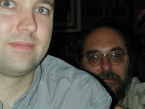 The timing couldn't be more interesting for me, because I'm in Seattle for two days working with Brent Simmons on the OPML Editor code base. One of the things we discussed yesterday was producing an IOS version, but realizing that it could not be distributed through Apple to end users (it could be distributed to developers) because it is a development environment. We plotted out a long roadmap that would take us through Linux to get to Android to try to get to a handheld environment, even though we would both vastly prefer to do this work on Apple's hardware. At today's meeting I'm going to suggest we skip the long road and make a beeline for IOS.
The timing couldn't be more interesting for me, because I'm in Seattle for two days working with Brent Simmons on the OPML Editor code base. One of the things we discussed yesterday was producing an IOS version, but realizing that it could not be distributed through Apple to end users (it could be distributed to developers) because it is a development environment. We plotted out a long roadmap that would take us through Linux to get to Android to try to get to a handheld environment, even though we would both vastly prefer to do this work on Apple's hardware. At today's meeting I'm going to suggest we skip the long road and make a beeline for IOS.
 It's almost as if we're part of some dance. That Apple made this announcement right now makes what has already been a very productive and interesting meeting potentially much more so. Now the challenge is to see how we can take advantage of the new opening.
It's almost as if we're part of some dance. That Apple made this announcement right now makes what has already been a very productive and interesting meeting potentially much more so. Now the challenge is to see how we can take advantage of the new opening.
Still diggin! ![]()
 Seattle public library
Seattle public library Spent some time yesterday in the main public library in Seattle.
BTW, due to a glitch in my CMS, the pointers to a piece about a paradox didn't make it into the index.
 Checking in with Facebook
Checking in with Facebook  On the subway ride to the airport today in NY there was an ad for a new construction project at Fulton St. It had a Twitter account for status updates, but no Facebook account. Not sure why, but if you had asked me to bet whether Twitter would be mainstream, just a couple of years ago, I would have bet against it. And would have lost.
On the subway ride to the airport today in NY there was an ad for a new construction project at Fulton St. It had a Twitter account for status updates, but no Facebook account. Not sure why, but if you had asked me to bet whether Twitter would be mainstream, just a couple of years ago, I would have bet against it. And would have lost.
Another angle -- LinkedIn is for business contacts. Facebook is for connecting with classmates and friends from days gone by. Twitter is for news. What is Foursquare for? And then what is Facebook's checkin service for? I mean, when it all shakes out. It can be hard to forsee.
But I got a glimpse of the utility today when I checked in at the Seattle airport. I could see 20 people I knew who had checked in earlier today. Presumably most of them are still here tonight. It gets me thinking. I wonder why this person is here. I have a theory why this other person is. And there were some surprises, and I could see some meetings that were probably happening just based on the connections between people who are here and those who live here.
Back in the old days when I'd arrive at an Esther or Stewart conference, first thing I'd do after checking in is review the list of people who were also there, and plot out a route through the network of people who were there. I felt that way today when reviewing the check-ins at Seatac. And realized that social networks of today make good models for the face-to-face conference networks we used to depend on for connecting.
Does Foursquare have the critical mass to pull off what Facebook just did for me today? Do they have that focus? Are they trying to position as the business-based social place-aware net? And LinkedIn should get this feature soon if they want to fend off an intrusion by Facebook. Hey it may already be too late. Or I may totally not understand what's going on.
 Instant Outliner support
Instant Outliner support This is the page that you get to from the Support button in the Buddies window of the Instant Outliner built into the OPML Editor.
If you have a question about using the tool, please post a comment here. But first, read the docs linked to here. It's bad form to ask a question that's answered in the docs.
A few notes...
1. Current status. I'm running a server for a very small number of people while I work on the software and protocols behind it. If I sent you a username and password then you have access, otherwise, please be patient.
2. The server software is included in the release. If you know how to work with Frontier as a programming environment it certainly is possible to set up your own server, so you don't have to wait for me. In fact, I would appreciate it very much if you didn't. I'm not particularly interested in operating your server. I am interested in a having a tool I can use with others to collaborate on interesting project.s
3. If you want to see what's going on on my server, there is a log.
4. Be sure to update your OPML Editor frequently. To do so choose Update opml.root from the File menu and click on OK to the prompts.
5. There is a universal binary of the Mac app, but it has display glitches. If you want to use an app without glitches then stick with the PowerPC app, but it requires Rosetta to run. Or use the binary app if you don't mind fumbling around a bit. I hope we have the display glitches solved soon.
 Morning ride -- no collisions
Morning ride -- no collisions Took a ride early today, beat the traffic, and the wind. Gorgeous clear day.
I am reminded that I have been spacing out posting to dailymile.com. I will try not to forget in the future. It would be really cool if they could bridge cyclemeter.com and dailymile.com. I would be more than happy to help work out the tech, which would be very simple. Come on guys, perfect opportunity for integration. It'd take at most a day on each end to get it working. And dailymile wouldn't even need any help from cyclemeter.
 Sunset bike ride, with minor collision
Sunset bike ride, with minor collision I managed to sneak in a ride at the end of the day yesterday.
The highlight of the ride, if you can call it that, was my first collision with another bike. It wasn't my first collision, when I was in junior high school I was hit by a car riding to school. No serious injuries, just some scrapes. Yesterday's accident was even less bruising.
Here's what happened.
First, the lanes were hugely crowded. Lots of walkers and people crossing the path. Some not realizing that it's a road, and stopping to have conversations in the middle of it, with little kids running into the path of oncoming traffic. One has to ride extremely cautiously in these circumstances.
 Near the end of the ride, I'm pulling up to an intersection where a stopped bike is just starting up, shakily. I give him wide berth and hope for the best. As I'm approaching, he lurks to the left, into my path. I say On Your Left, but he shifts further to the left. I hit the brakes and come to a stop next to him. He tips over onto me and we both go down. I ask "Are you hurt?" he says no and asks if I am. I say no. I get up and put the chain back on, getting my hands real greasy. That was the extent of the discomfort. It took five minutes to get back on the road, and as you can see from the map, only slowed me down to an average of 7 MPH during that mile.
Near the end of the ride, I'm pulling up to an intersection where a stopped bike is just starting up, shakily. I give him wide berth and hope for the best. As I'm approaching, he lurks to the left, into my path. I say On Your Left, but he shifts further to the left. I hit the brakes and come to a stop next to him. He tips over onto me and we both go down. I ask "Are you hurt?" he says no and asks if I am. I say no. I get up and put the chain back on, getting my hands real greasy. That was the extent of the discomfort. It took five minutes to get back on the road, and as you can see from the map, only slowed me down to an average of 7 MPH during that mile.
I ended the trip at dusk feeling really good and ready for a nice Italian dinner with a friend visiting from California. ![]()
Map. 9.95 miles. 54 minutes.
 Getting started with the Instant Outliner
Getting started with the Instant Outliner  See yesterday's Instant Outlining update.
See yesterday's Instant Outlining update.
Here's how you get on the Instant Outliner.
1. If you haven't already done so, install the OPML Editor.
2. When it asks if you want to update to get the latest parts, say you do.
3. From the Outliner menu, Instant Outliner sub-menu, choose Open My Outline. Your browser should come to the front asking for your username and password. Enter them and click Submit.
4. Repeat step 3, this time the outline will open.
5. To create a new entry, click the New Entry button in the window. Type the text. Then hit the Save button.
6. You will see in my outline a section with people you can follow. It's still very quiet, and probably will stay that way for a while. The best thing to do is to use the outliner to narrate your work, and eventually we'll add some discovery tools.
From there, if you have questions, post them here.
 Apple is green
Apple is green  The launch of Ping, following the mis-handling of Antennagate, show that Apple isn't ready for the success they've already achieved.
The launch of Ping, following the mis-handling of Antennagate, show that Apple isn't ready for the success they've already achieved.
The problems with the iPhone 4 antenna were easily handled, with an apology and a little grace. Show some concern for customers and the investment they make in these products (very substantial if you add up the monthly fee over the life of the contract). Most other companies Apple's size would have handled it without skipping a beat. Some companies even look for situations like this to demonstrate very visibly an alliance with their customers (thinking of Johnson & Johnson and the Tylenol scares).
Now Ping, which, if it were what it appeared to be at rollout would be a total game-changer. Because Apple failed completely to create a social network, and then made the mistake of calling it a social network. The inability to like a song as you listen to it, the assymetry of features for stars and users (they get all the Facebook-like features, we basically get to admire them). And today, it becomes clear that they didn't even anticipate spam.
 It's not that they're ill-intentioned, they're just ill-prepared. More than their users, they live in a Reality Distortion Field, and the people who make the Computer For the Rest of Us have no clue who the rest of us are and what we're doing. But that's okay, there's a solution. Do some research, ask some questions, and listen. Apple desperately needs to do that. The world has moved on, they have a lot of catching up to do.
It's not that they're ill-intentioned, they're just ill-prepared. More than their users, they live in a Reality Distortion Field, and the people who make the Computer For the Rest of Us have no clue who the rest of us are and what we're doing. But that's okay, there's a solution. Do some research, ask some questions, and listen. Apple desperately needs to do that. The world has moved on, they have a lot of catching up to do.
 Pre-Earl bike ride
Pre-Earl bike ride  Whatever Earl turns into as it brushes by the east coast, it's starting to be here in NYC. A few drizzles. A bit of wind. And a general semi-stormy atmosphere. Then the power went out in my apartment, unrelated to the weather (construction in the building) so that was my cue to get the fuck out of the house and onto the best bike in the world and go for my daily ride.
Whatever Earl turns into as it brushes by the east coast, it's starting to be here in NYC. A few drizzles. A bit of wind. And a general semi-stormy atmosphere. Then the power went out in my apartment, unrelated to the weather (construction in the building) so that was my cue to get the fuck out of the house and onto the best bike in the world and go for my daily ride.
As I headed north the intermittent drops turned into a steady rain, so I turned around at the Intrepid, but by the time I got back to the Village the rain had stopped, so I headed to the Battery where I stopped for a rest and checked in at Facebook.
Got a cool video of a water taxi!
Stopped to take a picture of a ghost bike that comemorates a biker killed riding in NY.
The map. 53 minutes. 9.4 miles.
 RSS to Twitter?
RSS to Twitter? I'm going to put a couple of hours into trying to resurrect FriendsOfDave. I miss it too much. I want to know what Om and Matt and Bijan and Fred and Sylvia et al are posting to their blogs. So here's the deal. Are there any services that watch an RSS feed and post to a Twitter account when a new item is available? I'm going to turn FOD into a feed, and when that's done, I'd like to hook it up that way. And if none of them are still running, at least you can hook in via your RSS reader app.
The dwcodeupdates feed is already available in RSS, here:
http://bits.codecasting.org/rss.xml
Back in a bit with some links. And in the meantime if you know of an RSS-to-Twitter web app, please post a pointer in a comment. Thanks! ![]()
rsstotwitter.com is no longer running.
Looks like TwitterFeed is still running.
Update: Here's the feed for FriendsOfDave.
Update: I set up TwitterFeed to publish updates from the feed to the Twitter account. It works. Nice!
However, it's slower than the original way. It only catches 5 updates at a time, and only checks once every half-hour. But it's better than nothing.
Update: I also set up TwitterFeed to handle dwcodeupdates.
Update: I added rssCloud support to the FriendsOfDave feed, in case TwitterFeed supports it, or would care to support it. I would like things to update faster. This is how you can do that.
 Instant Outlining update
Instant Outlining update  If you want an idea of what the Instant Outliner is, check out this excellent survey by Hutch Carpenter.
If you want an idea of what the Instant Outliner is, check out this excellent survey by Hutch Carpenter.
Very quietly, and I mean very quietly I've been working on rounding out the features of the latest OPML Editor-based implementation of Instant Outlining. This one is a keeper, I think -- more so than the previous releases.
The realtime updating code is pretty good. Based on long-polling and mailboxes. It works even if you're logged on at more than one location. Even if they both have the same IP address.
There's now a follow-unfollow paradigm, so not everyone is hooked in by default with everyone else. It works like RSS. The person being followed is not aware who is following, and does not have to give permission. However the updates are restricted to a single server.
The server is also part of the implementation. You can't get the client software without getting a server. However the server is disabled by default. The point is that is should be very easy to set up another instance.
Federation isn't implemented, but it is being thought about.
And the protocol is open. To prove that it's open, I've been working step-by-step with Marc Barrot, who is implementing an instant outliner that works with mine in his Javascript outline editor, iJot. It's important for a lot of reasons. For me, selfishly, it means I will be able to edit my instant outline on my iPhone or iPad, which doesn't have an implementation of the OPML Editor.
And I hear that might not be totally impossible. ![]()
Next week I'm going to Seattle to hang out with my old programming partner, Brent Simmons, and his lovely wife Sheila. We're going to get me booted up on kernel development. It's been way too long since I've gotten in there and been able to fix bugs and add new features. Funny how time flies when you're having fun.
If you want to try the Instant Outliner, let me know, send an email. All I have to do is create a username and password on my server. All the software is released.
 Twitter + OAuth update
Twitter + OAuth update  A fascinating post on Ars Technica on the Twtiter implementation of OAuth.
A fascinating post on Ars Technica on the Twtiter implementation of OAuth.
It confirms a concern I had. Since the OPML Editor is open source, and it supports Twitter's implementation of OAuth, I didn't see what good it did to pass around "secrets" in the source code. But I did what I was asked to do. I wasn't watching the developer mail list closely so I didn't see the discussions Ryan Paul mentions.
The more I read about what Twitter is doing these days, the more I see the shift away from developers and toward internal development. When people "argue" with me or have a "difference of opinion" about OAuth, they seem to only look at the technical issues. As if every developer could pour infinite resources down every hole. In practice, you only have so many hours in a day, and worse, you have fewer and fewer remaining hours in your life. So you have to choose carefully where you spend your time.
There are lots of ways for platforms to fail, and it can be hard to parse when the platform is failing, but the platform vendor is prospering. Sometimes that growth comes from eating the developers, which seems to me very much like what Twitter is doing now.
So the OAuth transition will be the first of many hurdles for developers. I choose not to jump over hurdles for platform vendors. I learned a long time ago that the only platform that actually works is one with no vendor. The more the vendor controls the developers, the less I want to be part of the community.
At the same time, I was running out of clever ideas for projects to do with Twitter. They haven't added any functionality that I'm interested in in a long time. I was at the point last year where I felt that everything interesting that could be done with Twitter had already been done. That every nook and cranny of their API had been explored. It seems they agree, more or less, because their approach is to try to capture the developer growth from two or three years ago. At the same time, no new territory is opening up. That, and the new controls, say the Twitter coral reef is no longer attracting much new life. With the caveat that that's how it seems to me, and I've been wrong many times before. ![]()
 They're dead now
They're dead now Yesterday I reported that the apps that I thought would drown in the Oauthpocalypse were still alive.
I don't usually like the death metaphor when it comes to software, but -- these guys are now really, officially, seriously and permanently dead.
 Mid-day heat-wave ride
Mid-day heat-wave ride You know it's not so bad riding mid-day in the middle of a heat wave.
For one thing, most people stay indoors, so the path isn't crowded.
The first half of the trip is great cause there's a powerful tail wind. I fly!
The return ride is a great workout cause there's a huge head wind. I crawl. My legs burn.
But always, the breeze actually keeps me cool. I think it would be worse if there was no motion in the air.
In any case, after a morning of dealing with stupid uncooperative servers, there's nothing like pounding the pavement with my bike, which I absolutely adore. Great ride.
The map. I hour three minutes. 11.86 miles.
 scripting.com: It's even worse than it appears
scripting.com: It's even worse than it appears We lost two-plus hours this morning as I scrambled to rebuild the scripting.com server.
A mysterious outage. I tried to reboot the server over and over, and it wouldn't come back. So I created another instance, but kept making mistakes with AWS. Then after fretting and thinking of a million other ways to do it, I sat down with pen and paper and wrote down, step by step, what I thought would work. Then I did it. It worked. ![]()
Moral of the story, there are no shortcuts possible. You must pay the piper. And as Jerry once sang, so wisely:
I know the rent is in arrears.
The dog has not been fed in years.
It's even worse than it appears!
See, Jerry was a musician, but he understood programming.
Namaste y'all!
Still diggin.
![]()
 Ping: It's even worse than it appeared
Ping: It's even worse than it appeared  Further examination of Apple's new social network reveals more problems.
Further examination of Apple's new social network reveals more problems.
To review from last night's post:
1. It's awkward, at least, that it runs in iTunes and not a web browser. There's no Back button, no way to copy the address of a page and share it outside of iTunes. Also if it were just a website we'd be able to access it from an iPad now, not some time in the future.
2. There's no way to Like the song you're listening to. In other words there doesn't seem to be any integration with the music-listening app, even though the social network is embedded in it.
3. It's a ghost town. Obviously they're recommending all the musicians they have, because they have nothing to do with my musical interests. Same with users.
Now, onto this morning's revelation.
Chuck Shotton writes: "It seems that the only way for mere mortals to post something to the timeline is to buy a song, review an album, or commit some other act of commerce on the iTunes Store, which I certainly have never done.
"It's unfortunate, because the capability is there to do much more. I followed Cold Play as an experiment and they can post pics, songs, status updates, and all the stuff you'd expect to do with a Facebook-like social media tool.
"I'm baffled why Apple has this locked down for normal users. Someone there has to have seen the potential for this to totally upset the social media balance. But if they cripple it at the outset, that critical mass of users will never happen, IMO."
So Ping is not a social network, by any realistic definition of the term.
Update #1: My guess as to why we can't post to the timeline is that Apple is afraid we might say something harsh about them or Ping.
Update #2: Doc Searls nailed it on Steve Jobs's art, in 1997.
 Ping first use
Ping first use I've got iTunes 10 installed, and have signed up on Ping.
My handle is "scriptingnews." You're welcome to follow me.
To be clear, they didn't give me a choice of name. That's the name I chose when I got my first iPod or whatever got me logged into their store the first time. (I don't remember.) I never would have chosen to be scriptingnews on a social network. Not at all obvious how to change it, if I can.
Here are their first recommendations. They bear absolutely no resemblance to any music I listen to or people I know. Obviously this is very very early days for Ping.
One thing I don't like about Ping is that it isn't in my web browser. I keep looking for the Back button. I keep wanting to find a URL so I can publish a link somewhere else. I think this is a big lose. It's the only social network I've ever tried that isn't in the web. Right now I think that's a deal-stopper.
So I played one of my current favorites thinking there would be an easy gesture in the iTunes interface to tell my Ping followers that I like it. After all why bother integrating it with iTunes if there is no integration? Well, there's nothing in the right-click menu for pinging the song. No menus, nothing anywhere in the user interface. What the heck were they thinking?? Hello, anyone home at Apple??
Conclusion: There's nothing, at this time, to do in Ping.
 OAuthcalypse didn't kill my apps
OAuthcalypse didn't kill my apps  This is really puzzling.
This is really puzzling.
The OAuthcalypse came and went, and the apps that it should have killed, the ones that use basic authentication, are still running.
Two examples: dwcodeupdates and friendsofdave.
The only explanation I've been able to come up with is that they made exceptions for these two accounts for some reason.
I felt I had to document this.
So, it is documented. Any theories welcome. (That aren't paranoid or paranormal.)
 A social network for music called Ping
A social network for music called Ping  Ping is Apple's big announcement today. The one that they'll be adding new stuff onto for years and years. The other announcements are just continuations of threads they started long ago. This is a new thread.
Ping is Apple's big announcement today. The one that they'll be adding new stuff onto for years and years. The other announcements are just continuations of threads they started long ago. This is a new thread.
They call it a social network "for music."
But it won't be "for music" for very long, if it even is just that at startup.
It'll be Apple's social network for PR.
It'll be Apple's social network for TV.
It'll be Apple's social network for developers.
It'll be Apple's social network for Steve Jobs.
All of Apple's stores will be on the network, so there will be a location angle. How long before Steve announces a new feature for the stores called (what else) "check in."
He said it's like Facebook or Twitter but for music, but that's just the opening-day positioning. It won't last.
Now the big question for the Scripting News community -- is there an API? Will developers get a hook into Ping? Will I be able to ping everyone when I advance a level in Angry Birds? (for example)
One more thing, great name, but they'll never register it as a trademark. Ping is a big word in this space. Long long before any of Apple's competitors were in the space.
 Are you tuned into Apple TV?
Are you tuned into Apple TV? I can't imagine there are many people who read this blog who are not tuned in, with Safari running on a Mac or iPhone or iPad, wondering what Uncle Steve is going to pull out of his hat.
 What's produced at hackathons?
What's produced at hackathons? 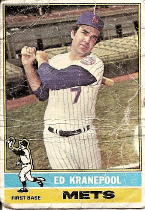 I've never participated in a hackathon, so I can't tell whether they produce anything or not. I'm assuming that at least some of the readers of this blog have been to one or more.
I've never participated in a hackathon, so I can't tell whether they produce anything or not. I'm assuming that at least some of the readers of this blog have been to one or more.
What's it like?
What kind of software is produced?
Is any of it useful?
Were any commercial products hatched at hackathons? Were any of them successful?
My intuition says that they're pointless exercises. I have at times gone on retreats with the idea of emerging with something useful or marketable, but I have to say the big leaps in software that I've seen or taken part of, come with steady daily work, when you've built up a head of steam over weeks or months.
It seems to me that the hackathon idea is more a dream of investors or marketers, that they can get a bunch of programmers in a room to invent something they can make money with. But that's just my impression.
If you have a story of a hackathon, please tell it.
 First ride of the new month -- it's a scorcha!
First ride of the new month -- it's a scorcha! Scorcha is NY-ese for "hot!"
Yeah it's the hottest summer in history.
A climate-change denier adds "that we know of."
Yes, there is a conspiracy. Back in the late 1800s some liberal limp-wristed Obama-lovers wiped a whole decade off the record. Why? Because it was much hotter than this summer was going to be. They just knew it. And they did it to piss off the idiots of the 21st century. Glad we got to the bottom of that one. ![]()
Anyway....
10.84 miles. 56 minutes.
When it's this hot, even if it isn't a record, you slow down and take it easy.